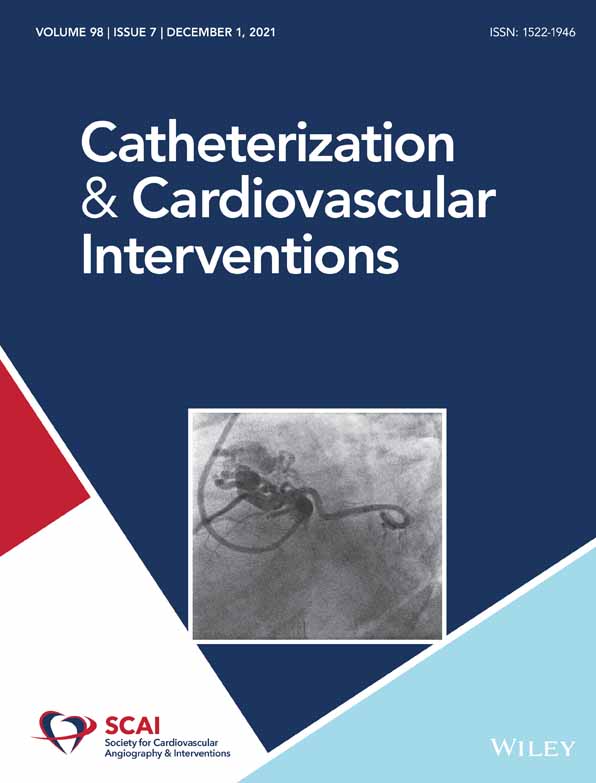Key Points
- Major bleeding is a frequent periprocedural complication of peripheral vascular interventions.
- An integer scoring system can be used to stratify patients according to their bleeding risk.
- Use of risk prediction scores may improve outcomes in PVI procedures; however, further studies are needed.
CONFLICT OF INTEREST
The authors declare no potential conflict of interest.
REFERENCES
- 1Salisbury AC, Safley DM, Kennedy KF, et al. Development and validation of a predictive model for bleeding after peripheral vascular intervention: a report from the National Cardiovascular Data Registry Peripheral Vascular Interventions Registry. Catheter Cardiovasc Interv. 2021; 98: 1363-1372
- 2Rayfield C, Agasthi P, Mookadam F, et al. Machine learning on high-dimensional data to predict bleeding post percutaneous coronary intervention. J Invasive Cardiol. 2020; 32(5): E122-E129.
- 3Ebinger J, Henry T, Kim S, Inkelas M, Cheng S, Nuckols T. Development and evaluation of novel electronic medical record tools for avoiding bleeding after percutaneous coronary intervention. J Am Heart Assoc. 2019; 8(22):e013954.
- 4Spertus JA, Decker C, Gialde E, et al. Precision medicine to improve use of bleeding avoidance strategies and reduce bleeding in patients undergoing percutaneous coronary intervention: prospective cohort study before and after implementation of personalized bleeding risks. BMJ. 2015; 350:h1302.
- 5Capodanno D, Bhatt DL, Gibson CM, et al. Bleeding avoidance strategies in percutaneous coronary intervention. Nat Rev Cardiol. Published online August 23, 2021. doi:10.1038/s41569-021-00598-1




